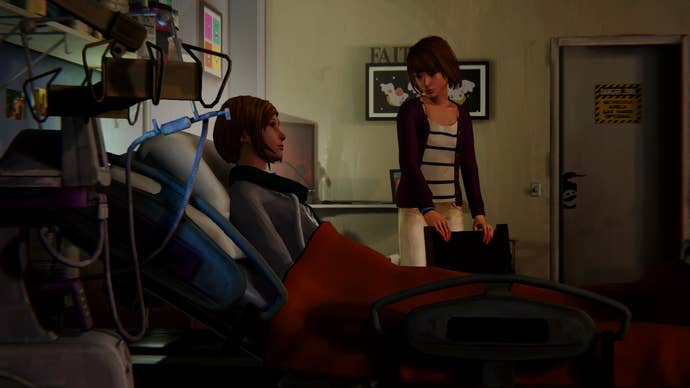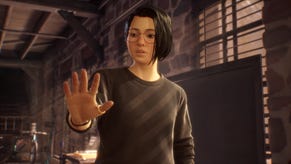Life is Strange Episode 4 PS4 Review: That Escalated Quickly
What answers lie inside the Dark Room?
This article first appeared on USgamer, a partner publication of VG247. Some content, such as this article, has been migrated to VG247 for posterity after USgamer's closure - but it has not been edited or further vetted by the VG247 team.
This is a review of episode 4 of a 5-episode series. Spoilers everywhere. Reviews for previous episodes can be found here:
- Episode 1
- Episode 2
- Episode 3
The last episode of Life is Strange ended with a vast expansion of protagonist Max Caulfield's time-shifting powers. Whereas before she was limited to rewinding time within a small window, Max discovered that she could actually jump back years in her personal timeline through the use of old photos. At the end of the last episode, Max jumped back and prevented the death of her best friend's Chloe's dad, which she believed led to Chloe's current rebellious nature.
This left Max in a new reality where she's one of the cool kids at Blackwell Academy, Chloe's parents are still together, and Chloe is paralyzed due to a separate accident. I expected that developer Dontnod might do more with this setup, but the opening section in this new reality is really just an emotional detour from the main story.
It does raise some powerful questions though. Is this really the best reality? Sure, Chloe's family is together and Chloe herself is a straight-A student, but they're buried under tons of medical debt and Chloe' is dying of respiratory failure's condition is getting worse. The culmination of the emotional detour is when Chloe asks you to turn up her morphine so she can die in peace. Do you acquiesce to her decision or refuse her request? What's the best timeline? What right does Max have to make this decision for everyone?
Ultimately, Max decides that the life of her friend is worth more than a father who's been dead for years in Max's perspective. She returns to the fateful day when he died and does nothing as he drives off to his death. The first 15-20 minutes of this episode are probably the strongest work Dontnod has released in this series.

Then we're back to our actual plot, with Max and Chloe trying to figure out where missing Blackwell Academy student Rachel Adams went. This part is like the previous episodes: go to an area, solve a puzzle or situation using Max's time-traveling powers, rinse, repeat. I admit, after those early moments, returning to the "real" world dulled my excitement a bit.
That excitement returns as you get towards the end of the episode. Over the course of each puzzle, you're given further looks into the life of Blackwell prince Nathan Prescott and his family, more indications that reality is twisting around Arcadia Bay, a solid coda for most of the relationships Max has cultivated during her time at the school, the final fate of Rachel Adams, and the culprit behind her disappearance.
The latter two answers are where Life is Strange Episode 4 begins to ramp up in excitement again. I'm not going to spoil these moments here, but things get real serious very quickly. The latter 30 minutes of this episode has a great deal of tension - even if the player can defuse some of that tension by wandering around the End of the World party - and pays off in the final scene of the episode. Everything falls apart and even time-traveling superpowers can't save the day.
Life is Strange started off slow and there's still a feeling that certain scenes are added to increase gameplay time rather than servicing the story, but Episode 4 is not only satisfying, but drives you to headfirst towards episode 5. This is probably the best episode in the entire series and now Dontnod just needs to bring it all home. Hopefully, they stick the landing and give Max Caulfield a satisfying conclusion to her coming-of-age saga.

InterfaceThe interface really does feel like a teenager's sketchbook.
Lasting AppealThe rewind mechanic means you'll experience most of the episode in one playthrough. Not much more to see beyond that.
SoundThe game's score is composed by Syd Matters' Jonathan Morali, with music from some alternative acts.
VisualsLife is Strange looks pretty good, but the lip-syncing is awful. There's also the occasional detail that looks off, like blurry textures.
ConclusionAfter a brief emotional detour, Life is Strange gets back to its main plot. The beginning and end of this episode are strong, with a lot of tension and emotional payoff, but the middle feels like it's padding out the gameplay time instead of serving the story. Still, this is the best episode yet.










